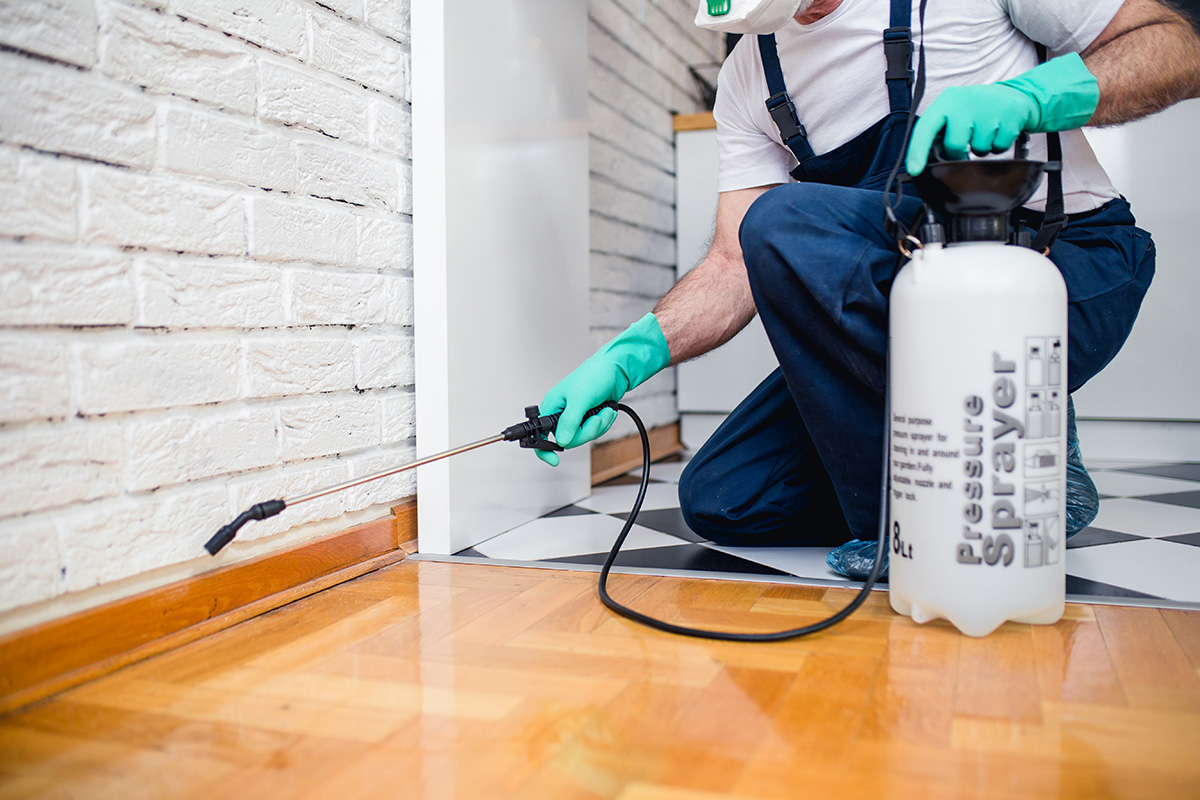Reliable A1 Bed Bug Treatment in Charlotte - Safe and Proven Approaches
Wiki Article
Bed Bug Therapy Breakdown: Contrasting Chemical Vs. Non-Chemical Solutions
In the world of pest control, especially when taking care of the relentless issue of bed insects, the selection in between chemical and non-chemical treatment services can be a crucial one. Both methods use distinctive advantages and drawbacks, influencing aspects such as performance, safety and security considerations, and general price. By examining the nuanced details of each technique, a clearer understanding of which path to go after in resolving a bed bug invasion can be acquired.Effectiveness of Chemical Treatments
Chemical treatments for bed pest invasions have actually been extensively identified for their quick and potent efficacy in eradicating these pests. When thinking about the effectiveness of chemical therapies, it is crucial to recognize that they can provide a fast and detailed option to a bed insect trouble. Expert exterminators typically rely upon insecticides to target bed bugs at various phases of their life process, consisting of eggs, fairies, and grownups. These chemicals normally work by interrupting the bed pests' nerves, bring about paralysis and ultimate death.Furthermore, chemical treatments have the advantage of offering residual effects, implying that they can remain to get rid of bed bugs also after the initial application. This residual activity is especially beneficial in combating any kind of potential re-infestations. Furthermore, the rapid action of chemical therapies can bring relief to people facing serious bed pest infestations, enabling them to gain back control of their home promptly.
Safety Issues With Chemical Solutions
One critical aspect that needs careful consideration when making use of chemical remedies for bed bug therapy is making certain the security of owners and the atmosphere. While chemical treatments can be effective in eradicating bed bugs, they might posture threats if not handled properly. Among the key safety and security worry about chemical remedies is the possible damage they can cause to human health. Direct exposure to particular chemicals made use of in bed insect treatments can lead to respiratory concerns, skin irritability, or various other unfavorable reactions, especially in people with pre-existing problems or sensitivities. Additionally, improper application or dosage of chemical pesticides can result in poisonous deposits sticking around in the cured location, posturing long-lasting health and wellness risks to residents.Additionally, the environmental influence of chemical services is an additional significant factor to consider. Some pesticides used in bed pest therapies might be unsafe to beneficial bugs, wildlife, and environments if they leach right into the soil or water systems. It is important to make use of chemical treatments carefully, following security standards, and thinking about much less toxic options to alleviate these risks and make sure the reliable and risk-free monitoring of bed bug problems.
Benefits of Non-Chemical Techniques
Considering the prospective safety issues and ecological influence linked with chemical remedies for bed pest treatment, checking out non-chemical strategies presents a promising option with a number of unique benefits. Non-chemical therapies are eco pleasant, as they do not contribute to air or water pollution, making them a sustainable option for insect control.Additionally, non-chemical services can be efficient in targeting bed pests, including hard-to-reach areas where chemical therapies might not penetrate - A1 bed bug exterminator charlotte. Methods such as warm therapy, vacuuming, Web Site vapor cleaning, and mattress coverings provide complete elimination without the use of dangerous chemicals.
Limitations of Non-Chemical Treatments

In addition, non-chemical treatments commonly call for multiple applications to accomplish effective obliteration. This can be time-consuming and might not constantly assure complete elimination of all bed pests and their eggs, specifically in hard-to-reach or covert areas.
Furthermore, the success of non-chemical treatments greatly counts on proper application and thoroughness, which can be testing for people without specialist competence. Poor application of non-chemical techniques may lead to insufficient obliteration, leading to persistent invasions and the requirement for extra therapies.
Consequently, while non-chemical therapies have their benefits, it is vital to acknowledge these restrictions and consider them when figuring out one of the most reliable strategy for taking care of bed pest problems.
Price Contrast: Chemical Vs. Non-Chemical Options
Offered the constraints connected with non-chemical therapies, an important aspect to evaluate in the context of bed bug management is the cost comparison in between chemical and non-chemical choices. Chemical treatments generally involve the application of pesticides by specialists, which can range from $250 to $900 per room, relying on the intensity of the problem and the dimension of the location to be dealt with. In contrast, non-chemical treatments like heat treatment or vapor can be a lot more costly, with costs varying from $1,000 to $6,000 for an entire home. While the initial price of chemical treatments may appear lower, multiple therapies may be called for to completely eliminate the problem, potentially increasing the total cost. On the various other hand, non-chemical choices may supply a more lasting and eco-friendly remedy, although they can be cost-prohibitive for some individuals. Inevitably, when taking into consideration the cost of bed pest treatment alternatives, it is very important hop over to these guys to weigh the in advance expenditures against the performance and long-lasting sustainability of the picked home pest protection method.Conclusion

Considering the prospective safety and security issues and ecological impact connected with chemical options for bed bug treatment, checking out non-chemical approaches provides an appealing alternative with a number of distinctive benefits.Given the restrictions linked with non-chemical therapies, a vital facet to evaluate in the context of bed bug administration is the expense comparison between chemical and non-chemical choices. In comparison, non-chemical therapies like heat therapy or steam can be a lot more pricey, with prices ranging from $1,000 to $6,000 for a whole home. While the first price of chemical therapies may seem lower, multiple treatments may be required to completely get rid of the problem, possibly raising the total price.In verdict, when contrasting chemical and non-chemical bed pest therapy alternatives, it is important to consider effectiveness, safety, benefits, limitations, and cost.
Report this wiki page